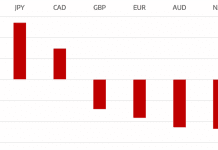Ever wondered what a 13D/A filing is and why it matters to investors? This filing can be a big deal if you’re keeping an eye on stock ownership changes. Basically, it’s a document that tells you who owns a chunk of a company’s shares and what their plans might be. If you’re an investor, understanding these filings can give you a heads-up on potential changes in company control or strategy. Let’s break it down and see what you need to know about 13D/A filings.
Key Takeaways
- 13D/A filings reveal significant stock ownership changes, crucial for investor awareness.
- These filings can indicate potential shifts in company control or strategy.
- Understanding the difference between Schedule 13D and 13G is vital for compliance.
- Recent amendments to filing deadlines and disclosure requirements impact investors.
- Consulting legal experts is recommended to navigate the complexities of 13D/A filings.
Overview of 13D/A Filing
Definition and Purpose of 13D/A Filing
The 13D/A filing, an amendment to the Schedule 13D, is a critical document submitted to the Securities and Exchange Commission (SEC) by investors. When an investor acquires more than 5% of a company’s equity shares, they must file a Schedule 13D to disclose their holdings and intentions. The 13D/A serves to update or correct any information previously reported in the Schedule 13D, ensuring transparency about significant ownership changes. This amendment is crucial for maintaining up-to-date records of beneficial ownership, which can influence market dynamics and investor decisions.
Historical Context and Evolution
The requirement for the 13D filing originated from the Williams Act of 1968, aimed at providing transparency and fairness in securities markets. Over the years, the rules governing these filings have evolved to adapt to the changing landscape of financial markets. The introduction of electronic filing systems and amendments to filing deadlines reflect the ongoing efforts to enhance the efficiency and accessibility of these disclosures. Recent changes, such as those discussed in a recent report, highlight the growing importance of technology in managing these requirements.
Importance for Investors
For investors, the 13D/A filing is a valuable tool for gauging the intentions of major shareholders. It offers insights into whether an investor is passive or intends to exert control, providing a clearer picture of potential shifts in corporate governance. This transparency is particularly important in today’s fast-paced financial environment, where understanding the regulatory frameworks like Schedule 13G can significantly impact investment strategies. By staying informed through these filings, investors can make more strategic decisions, aligning their actions with the broader market trends and potential corporate actions.
Key Components of a 13D/A Filing
Beneficial Ownership Disclosure
In a 13D/A filing, the beneficial ownership disclosure is a critical element. This section requires the filer to reveal who actually owns, or has control over, more than 5% of a company’s voting securities. It’s not just about having the shares in your account; it’s about having the power to influence decisions or sell them. Investors must provide details about the number of shares owned and the percentage of the total shares they represent. This transparency helps other investors understand who has significant influence over a company.
Purpose of Acquisition
The "Purpose of Acquisition" section is where the filer explains why they bought the shares. Are they planning to hold them as a long-term investment, or do they have more immediate plans, like influencing company management or selling them for profit? This part of the filing gives insight into the investor’s intentions, which can signal potential changes in the company’s direction. For instance, if an investor states their purpose is to gain control, it might indicate an upcoming shift in management or strategy.
Source of Funds
Here, the filer must disclose how they financed the acquisition of shares. Did they use personal funds, take out a loan, or engage in some other form of financing? This information can reveal the financial backing and stability of the investor. Knowing whether an acquisition is supported by substantial capital or relies on borrowed funds can influence how other investors perceive the risk and stability of the investment.
Filing Requirements and Deadlines
Initial Filing Deadlines
When it comes to filing requirements for Schedules 13D and 13G, understanding the deadlines is crucial. For Schedule 13D, the initial filing must be made within five business days after acquiring more than 5% of a company’s shares. This is a significant reduction from the previous 10 calendar days. Meanwhile, Schedule 13G has different timelines, depending on the type of investor. Passive investors need to file within five business days of surpassing the 5% threshold, whereas Qualified Institutional Investors (QIIs) have up to 45 days after the quarter ends.
Amendment Filing Requirements
Amendments to these schedules are equally important. For Schedule 13D, any material change requires an amendment to be filed within two business days. Previously, this was required "promptly," which was less specific. For Schedule 13G, amendments must be filed within 45 days after the calendar quarter in which a material change occurred. If ownership exceeds 10% or changes by more than 5%, amendments must be filed within two business days.
Consequences of Non-Compliance
Failing to meet these deadlines can have serious consequences. Non-compliance may result in penalties or enforcement actions by the SEC. Investors must be diligent about keeping track of their holdings and ensuring all filings are up-to-date and accurate. This is particularly important as the SEC aims to provide timely access to material information for investors in today’s fast-paced markets.
Staying compliant with SEC filing requirements isn’t just about avoiding penalties. It’s about maintaining transparency and trust with your investors. Filing deadlines are not just bureaucratic hurdles; they are essential for ensuring that the market operates smoothly and fairly.
Understanding the Differences Between Schedule 13D and 13G
When investing in publicly traded companies, understanding the nuances between Schedule 13D and 13G filings is crucial. These forms, required by the SEC, help provide transparency about significant ownership stakes in companies.
Criteria for Filing Schedule 13D
Schedule 13D is typically filed by investors who hold more than 5% of a company’s shares and have an active intent to influence the company’s management or operations. This form is often seen as a signal of potential activist investor behavior. Filing a 13D involves disclosing the purpose of the acquisition, the source of funds, and any plans to make significant changes in the company.
Criteria for Filing Schedule 13G
On the other hand, Schedule 13G is a shorter, simpler form used by investors who also own more than 5% of a company’s shares but do not intend to exert control or influence over the company. This form is commonly filed by "passive investors," such as mutual funds or institutional investors, who hold shares as part of a diversified portfolio.
Switching Between Schedules
Investors may need to switch from a 13G to a 13D if their intentions change from passive to active. Conversely, if an investor originally filed a 13D but later decides to take a passive role, they might switch to a 13G. It’s important to keep track of these changes to ensure compliance with SEC regulations.
The distinction between these forms is not just procedural; it reflects the investor’s strategy and intentions. Understanding these differences can provide insights into potential market movements and strategic shifts within a company.
Impact of Recent Amendments on 13D/A Filing
Changes in Filing Deadlines
The recent amendments to the 13D/A filing rules have brought significant changes, especially in terms of deadlines. The deadline for filing initial Schedule 13D has been reduced from ten days to just five business days. This change reflects the fast-paced nature of today’s financial markets. Additionally, any amendments to Schedule 13D must now be filed within two business days of a material change, replacing the previous, more ambiguous "prompt" filing requirement.
Here’s a quick look at how the filing deadlines have changed:
| Filing Type | Old Deadline | New Deadline |
|---|---|---|
| Initial Schedule 13D | 10 calendar days | 5 business days |
| Schedule 13D Amendments | Prompt filing | 2 business days |
| Initial Schedule 13G | Varies by filer type | Accelerated timelines |
New Disclosure Requirements
The amendments have also introduced new disclosure requirements aimed at enhancing transparency. These include clarifications on who qualifies as a beneficial owner under Rule 13d-3, especially when certain cash-settled derivatives are involved. Moreover, the legal standards for forming a "group" under Rule 13d-5 have been clarified, providing more guidance for investors.
Implications for Passive Investors
For passive investors, who own more than 5% of a class of securities but do not intend to influence control, the changes are particularly impactful. The frequency of required disclosures has increased, ensuring that market participants are better informed. This is a crucial step in reducing information asymmetry in the market, which can otherwise disadvantage smaller investors.
In light of these changes, investors should reassess their reporting strategies, especially if they are involved in private equity or fintech sectors. Staying compliant with the new rules is not just about meeting deadlines; it’s about maintaining transparency and trust in the market.
Investors are encouraged to consult with legal counsel or utilize regulatory technology solutions to navigate these complexities efficiently. This ensures that they remain compliant while also leveraging the benefits of modern financial strategies to enhance market opportunities.
Best Practices for Compliance with 13D/A Filing

Consulting with Legal Counsel
When dealing with the complexities of 13D/A filings, having a legal expert by your side can be a game-changer. Legal counsel can provide invaluable guidance on navigating the nuances of compliance, helping you understand the specific requirements and potential pitfalls associated with these filings. They can assist in interpreting the rules and ensuring that your filing aligns with the latest regulatory updates. This is particularly important given the SEC’s recent amendments, which have introduced new deadlines and disclosure requirements.
Utilizing SEC Reporting Software
Leveraging technology can significantly streamline the filing process. SEC reporting software offers templates and automated checks to help you prepare accurate and timely submissions. These tools can reduce the risk of errors and ensure that all necessary information is included. By using such software, you can focus on strategic decision-making rather than getting bogged down in administrative tasks. For instance, advanced platforms can integrate features like AI-driven credit research to enhance your data analysis capabilities, aligning your filings with broader investment strategies.
Monitoring Beneficial Ownership Changes
Keeping a close eye on changes in beneficial ownership is crucial for timely and accurate filings. Regular monitoring allows you to detect any shifts that might trigger a filing requirement. Establishing a robust internal process for tracking ownership changes can help avoid last-minute scrambles and potential non-compliance. Consider setting up alerts or using specialized software to keep track of these changes efficiently.
Staying ahead of the curve in 13D/A filings requires a proactive approach. By consulting with legal experts, utilizing the right technology, and maintaining vigilant monitoring practices, investors can ensure compliance and focus on their core business objectives.
Role of 13D/A Filing in Investor Relations

Enhancing Transparency and Communication
The 13D/A filing is a powerful tool in the world of investor relations, offering a window into the ownership dynamics of a company. By requiring disclosures of significant share ownership, it ensures that all stakeholders have access to crucial information about who holds power within the company. This transparency helps maintain trust and open communication between the company and its investors. When investors know who the major players are and their intentions, they can make more informed decisions.
Preparing for Activist Investors
One of the key roles of the 13D/A filing is in preparing a company for potential activist investors. These filings can signal when an investor plans to take an active role in influencing company policy or strategy. By monitoring these filings, a company can anticipate potential challenges or changes and prepare accordingly. This proactive approach allows companies to engage with activist investors constructively, addressing their concerns before they escalate.
Engaging with Shareholders
The 13D/A filing also plays a significant role in facilitating shareholder engagement. By understanding the composition of their shareholder base, companies can tailor their communication strategies to better address shareholder concerns and expectations. Engaging directly with shareholders based on insights from these filings can lead to more meaningful dialogues and stronger relationships. Companies that actively communicate with their shareholders are often better positioned to manage shareholder expectations and foster a cooperative environment.
Conclusion
Understanding the intricacies of 13D/A filings is crucial for investors aiming to navigate the complex landscape of beneficial ownership reporting. These filings not only provide transparency into significant shareholdings but also offer insights into the intentions behind such investments. With recent amendments to the filing deadlines and requirements, it’s more important than ever for investors to stay informed and proactive. By consulting with legal experts and keeping abreast of regulatory changes, investors can ensure compliance and make informed decisions. As the market continues to evolve, staying updated with these guidelines will be key to maintaining a strategic edge.
Frequently Asked Questions
What is a 13D/A filing?
A 13D/A filing is a document that investors must submit to the SEC when they own more than 5% of a company’s shares. It updates or amends a previous Schedule 13D filing.
Why is the 13D/A filing important for investors?
The 13D/A filing helps investors know who owns a large chunk of a company and what their intentions are, like whether they want to influence the company or just invest passively.
What are the deadlines for filing a 13D/A?
The deadlines for filing a 13D/A depend on changes in ownership. Generally, initial filings must be made within 10 days of acquiring 5% ownership, but deadlines for amendments can vary.
How does a 13D filing differ from a 13G filing?
A 13D filing is for investors who want to influence or control a company, while a 13G is for those who own shares but don’t seek control. The filing deadlines and requirements also differ.
What happens if an investor doesn’t comply with 13D/A filing rules?
If an investor doesn’t comply, they could face penalties or legal issues. It’s important to follow the rules to avoid trouble with the SEC.
Can an investor switch between filing a 13D and a 13G?
Yes, an investor can switch between a 13D and a 13G filing, depending on their intentions and changes in their ownership stake.

Peyman Khosravani is a global blockchain and digital transformation expert with a passion for marketing, futuristic ideas, analytics insights, startup businesses, and effective communications. He has extensive experience in blockchain and DeFi projects and is committed to using technology to bring justice and fairness to society and promote freedom. Peyman has worked with international organizations to improve digital transformation strategies and data-gathering strategies that help identify customer touchpoints and sources of data that tell the story of what is happening. With his expertise in blockchain, digital transformation, marketing, analytics insights, startup businesses, and effective communications, Peyman is dedicated to helping businesses succeed in the digital age. He believes that technology can be used as a tool for positive change in the world.





































